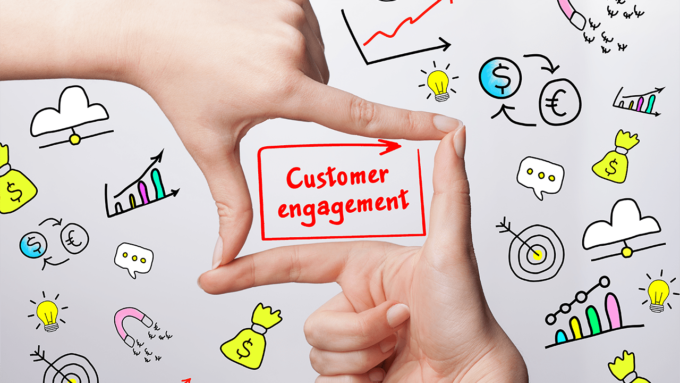Customer engagement is a driving force of any online business as it is a measure of the interactions a business has with its customers. In simple terms, it is a means of establishing relationships with customers.
Customers can interact with your business through your website or social media channels, and it is essential to keep track of customer engagement metrics in order to see what types of content interest them, which products are selling, and even pinpoint which platform your business gains leverage. You can, then, use these pieces of information to further fuel your online presence and boost your revenue.
1. Measure Likes And Favorites

Social media is an essential tool wherein you can gain insights regarding your customers’ preferences. The number of likes and favorites indicates their interest in your posts. It illustrates that they find your posts valuable enough to warrant support.
While people often focus on the number of positive reactions you get, it is also helpful to look into the dislikes received by your posts. You need to take these constructively for you to come up with effective strategies to improve weak areas.
2. Count The Number Of Shares
Apart from the approvals gained, the number of shares or retweets can indicate how your post resonates with your audience. Getting your post shared allows your message to be amplified and connect with your customers’ friends, followers, or subscribers, and even extend further into various social networks.
This also gives you an idea as to where your audience is, as well as allows you to time your posts so they can see it. This measurement provides insight as to what platform is most effective to get your message across. At the same time, it also informs you when your followers are online and use this as a cue to provide updates or upload new content.
3. Check Comments

Comments allow you to gain a deeper understanding of your audience and the strengths of your brand or campaign. Comments may be in a form of praise or additional inquiry that requires acknowledgment and even gratitude on your part. The same is true with negative comments, which can initiate further engagement with customers. Comments provide you a gauge of your active users and their interests. These also allow you to address their concerns on an individual level, giving your company a more human approach. Companies like Aceyus utilize call center features to answer user concerns in a timely manner to create positive interactions with their brand.
4. Find Converts
The main function of social media is to direct traffic to your site and compel them to act on a post they clicked or commented on. The conversion ensures that your audience goes beyond reading your content as they take further action to submit forms, buy your products, visit and register to your site, or even download your mobile app.
5. Listen

Consumer interests inform you regarding the content they find relevant, creating a two-way conversation between your company and its audience. Once converts have taken action, it is also important to integrate a form of a survey in order to gain further insight regarding customer experience. This customer satisfaction survey provides insight as to what customers think about the brand, the extent of their support, and what areas need to be addressed or improved. CSAT surveys done on posts or emails can be used to improve user experience, modify products, and answer to market demands.
6. Make Sense Of All The Data
Once you’ve measured all social media reactions and shares, the next logical step is to quantify all these pieces of data. Measuring customer engagement metrics can be handled by social media analytics.
Likes and favorites compromise what is called the applause rate. The average number of likes and favorites on a post can tell you how many of your followers are active users and determine the number of loyal followers. This must be tracked on a regular basis to ensure that the applause rate increases over time.
The amplification rate is the average number of shares garnered by a post and it tells you the extent up to which your message reaches your contacts and their corresponding networks.
The conversion rate takes into account the number of individuals that take action on your post. This metric has to do with the average number of website registrations, email subscriptions, sales, and downloads performed after clicking on a specific link or post.
According to Google analytics expert Avinash Kaushik, the best social engagement metrics are conversation, amplification, and applause as they measure how well your content captures attention and how social media reactions and calls to action can translate into sales.
7. Use Customer Engagement Platforms

Customer engagement entails listening to what your users need and responding to their inquiries (or complaints) in a timely manner. As these metrics are but one facet, it is useful to find tools that can help you manage these.
There are a number of social media analytics that you can use to organize various data taken from your website and social media accounts. These can be calculated using a specific formula to find the average, letting you measure how well your posts are doing and which content is widely received, as well as giving insight as to what content your audience finds relevant, as well as points you can improve on.
But, social media metrics is but one facet of customer engagement, and you must also need to organize customer inquiries and feedback from other channels, such as chats or emails. Customer engagement platforms serve to integrate all aspects of customer engagement into one dashboard. It permits you to unify analytics data and CRM tools and makes it easier to generate social media marketing strategies that are a perfect fit to your customers and your campaign.
Conclusion
Customer engagement is a vital aspect of any business, and social media allows you to locate an audience that is not only receptive but can readily attach themselves to your brand. Measuring social media metrics allows you to track customer engagement better, and the use of a unified tool can be an advantage to your business.









